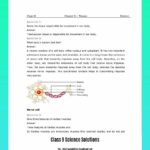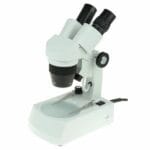This guide empowers you with the knowledge and resources to excel in Edgenuity Earth Science. We’ll explore effective study strategies, delve into the core concepts of this fascinating subject, and equip you with the tools to not only find answers but to truly understand the intricacies of our planet.
Launching Your Earth Science Journey
Navigating Edgenuity Earth Science can feel like exploring uncharted territory. This guide provides the essential tools to embark on your successful voyage of discovery.
Essential Tools for Edgenuity Success
Think of these resources as your essential toolkit for navigating the course:
Quizlet: Your Flashcard Launchpad: Quizlet offers a readily accessible collection of flashcards, perfect for reviewing key concepts, from plate tectonics to weather patterns. This is a powerful tool for reinforcing learning and preparing for assessments.
Answer Guides: Illuminating the Path: Answer guides provide valuable insights and explanations, helping you understand the “why” behind the “what.” They can be invaluable for clarifying complex topics, but remember, they are meant to supplement your learning, not replace it.
Edgenuity Assessment Answers: Charting Your Progress: After completing quizzes and tests, Edgenuity often provides access to the answers. This allows you to review your performance, identify areas for improvement, and solidify your understanding.
Deepening Your Earth Science Exploration
True understanding goes beyond memorization. Here’s how to dive deeper:
Study Resources and Lab Guides: Hands-On Learning: Edgenuity’s lab guides offer interactive experiences that bring concepts to life. These virtual labs allow you to explore everything from the Earth’s layers to the moon’s orbit, providing hands-on learning opportunities.
Expanding Your Universe: Earth and Space Science Resources: Earth Science is just one piece of the cosmic puzzle. Explore related resources in Earth and Space Science to broaden your perspective. Learning about other planets, stars, and galaxies can provide valuable context for understanding our own planet.
Navigating with Integrity
As you embark on your Earth Science journey, ethical exploration is paramount.
The True Measure of Success
Embrace Genuine Understanding: While resources like answer keys can be helpful, they should never replace true learning. Focus on comprehending the concepts, not just memorizing answers.
Educators: Guiding the Exploration: Teachers play a vital role in shaping how students navigate online learning platforms. They encourage responsible resource use, emphasizing comprehension and critical thinking over simply seeking answers.
Staying Up-to-Date: The field of Earth Science and online platforms like Edgenuity are constantly evolving. Staying current with these changes ensures you have the most accurate and relevant information.
By embracing these strategies, you can transform your Edgenuity Earth Science experience into an exciting voyage of discovery.
Beyond Edgenuity: Exploring the Big Questions Earth Science Can Answer
Earth science encompasses a vast range of topics, from the composition of the Earth to its place in the universe. It grapples with fundamental questions that have real-world implications for how we live and understand our planet.
Unraveling Earth’s Mysteries
Earth’s Formation: How did our planet, with its unique ability to support life, form billions of years ago? Scientists study ancient rocks, meteorites, and other planets to piece together this puzzle.
Earth’s Composition: What constitutes the Earth’s atmosphere, oceans (hydrosphere), and solid ground (geosphere)? Understanding these components and their interactions is crucial for predicting weather patterns and locating valuable resources.
System Interactions: Earth’s systems are interconnected. Changes in one system, like ocean currents, can influence others, like weather patterns. Grasping these relationships helps predict and mitigate the effects of natural disasters and climate change.
Natural Disasters: What mechanisms drive earthquakes, hurricanes, and volcanic eruptions? Researchers explore these questions to improve forecasting and disaster preparedness.
Human Impact: How do human activities, such as pollution and deforestation, impact the Earth’s systems? This research informs decisions about environmental interaction and sustainability.
The Ongoing Quest for Knowledge
Earth science is an ongoing exploration. New discoveries continually reshape our understanding of the planet. The table below summarizes some key questions Earth science investigates:
| Question | What Earth Science Investigates |
|---|---|
| How did Earth form? | Early Earth conditions, planetary accretion, and the development of the atmosphere and oceans |
| What is Earth made of? | Composition of the atmosphere, hydrosphere, and geosphere |
| How do Earth’s systems interact? | Relationships between the atmosphere, hydrosphere, and geosphere, e.g., weather patterns, erosion |
| How can we predict natural disasters? | Causes and patterns of earthquakes, hurricanes, volcanic eruptions, and other hazards |
| How do humans impact the environment? | Effects of pollution, deforestation, climate change, resource extraction, and other activities |
It’s important to remember that scientific understanding is constantly evolving. Many areas of Earth science are still under active research. This ongoing quest for knowledge is what makes the field so exciting.
Learn all about the latest in coronal polishing to help you achieve a healthier smile.
Decoding the Earth Science Test: Question Counts, Types, and Prep Strategies
How many questions are on your Earth science test? The answer, unfortunately, isn’t straightforward. The number of questions can vary based on several factors:
Factors Influencing Test Length
- Exam Level: A short quiz might contain 10-15 questions, whereas a midterm or final could have 50 or more.
- Test Source: Textbook publishers, online platforms like Edgenuity, and individual teachers all have different test formats. Edgenuity lesson quizzes often have around 25 questions, while cumulative exams are more extensive.
- Exam Type: A final exam will likely have more questions than a unit test. The inclusion of essays or problem-solving exercises also affects the overall question count.
Edgenuity Specifics
Edgenuity lesson quizzes generally consist of around 25 questions. However, cumulative exams, often requiring proctoring, are more comprehensive.
Preparing for Success
Focusing solely on the number of questions isn’t enough. Understanding the types of questions and the topics covered is crucial.
- Question Types: Will you encounter multiple-choice, true/false, fill-in-the-blank, or essay questions?
- Topics Covered: What concepts will be emphasized?
Consult your teacher or review study guides, practice tests, and resources like Quizlet to gain valuable insights.
Is Earth and Space Science Hard? A Comprehensive Guide (Edgenuity & Beyond)
Is Earth and Space Science difficult? The answer depends on various factors: your background, learning style, and interest level.
Navigating the Cosmos
Earth and Space Science covers a vast range of topics, from the smallest particles to the largest galaxies. This breadth, while exciting, can feel overwhelming. The subject requires a blend of abstract thinking, data analysis, and some memorization.
Strategies for Success
While some inherent aptitude may help, with the right approach, anyone can succeed:
- Utilize Resources: Study guides, practice quizzes, and online videos can be immensely helpful.
- Connect to the Real World: Relate concepts to everyday experiences to make learning more engaging.
- Explore Beyond Edgenuity: Supplement your coursework with external resources and delve deeper into intriguing topics.
Overcoming Challenges
The perceived difficulty of Earth and Space Science can be influenced by various factors. Ongoing research continues to explore the impact of learning styles on the learning process.
By embracing curiosity, putting in effort, and utilizing available resources, you can unlock the mysteries of our planet and beyond.
- Georgia Platform: A Southern Strategy, 1850s - March 31, 2025
- How many weeks is 40 days: Quick Conversion Guide for Accurate Results - March 31, 2025
- How many feet is 300 meters? 984 Feet: Understand Length Conversions Easily - March 31, 2025
















1 thought on “Edgenuity Earth Science Answers: Your Guide to Success”
Comments are closed.